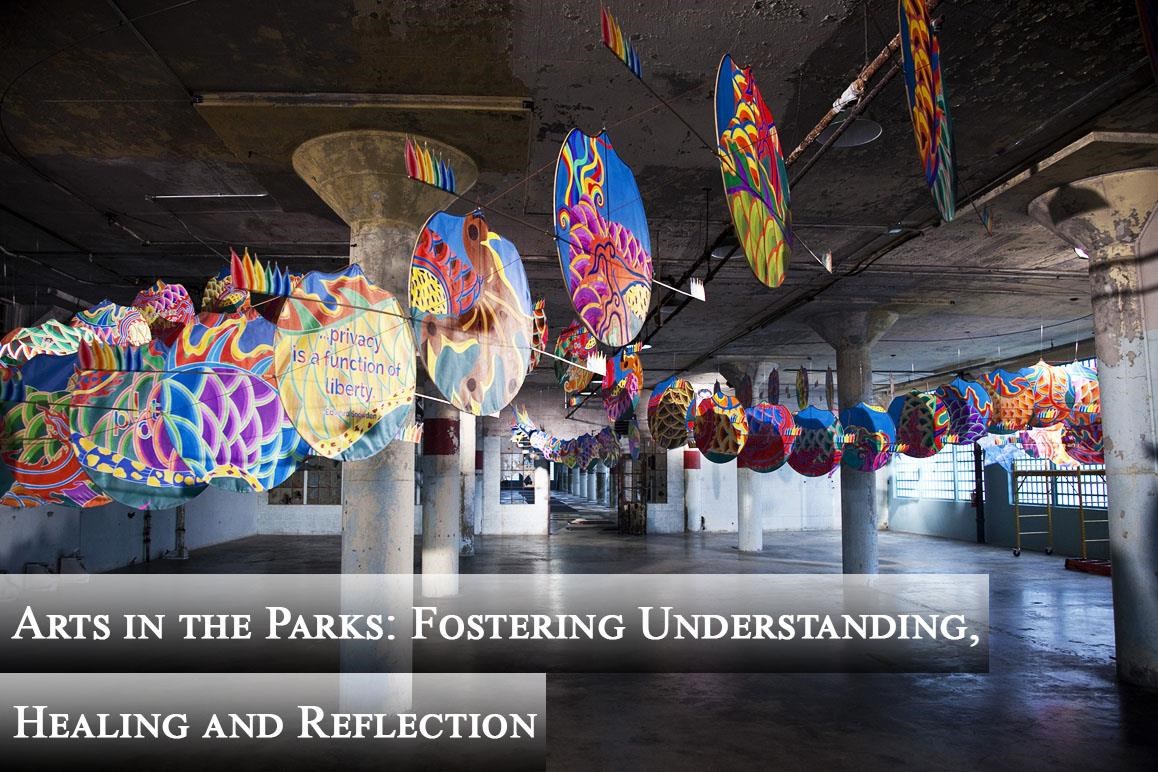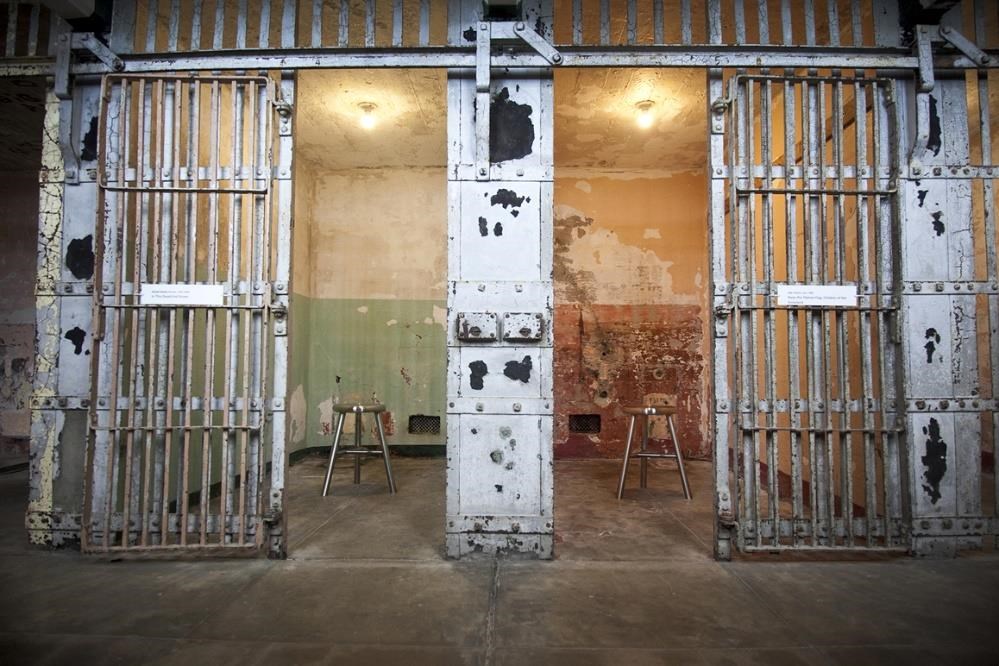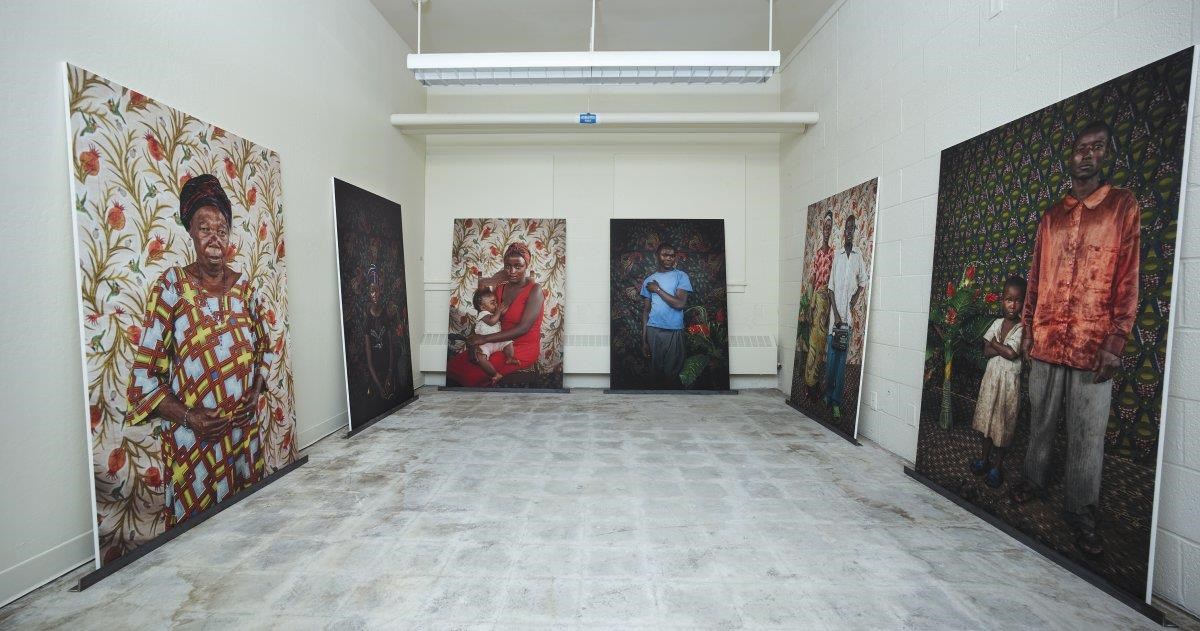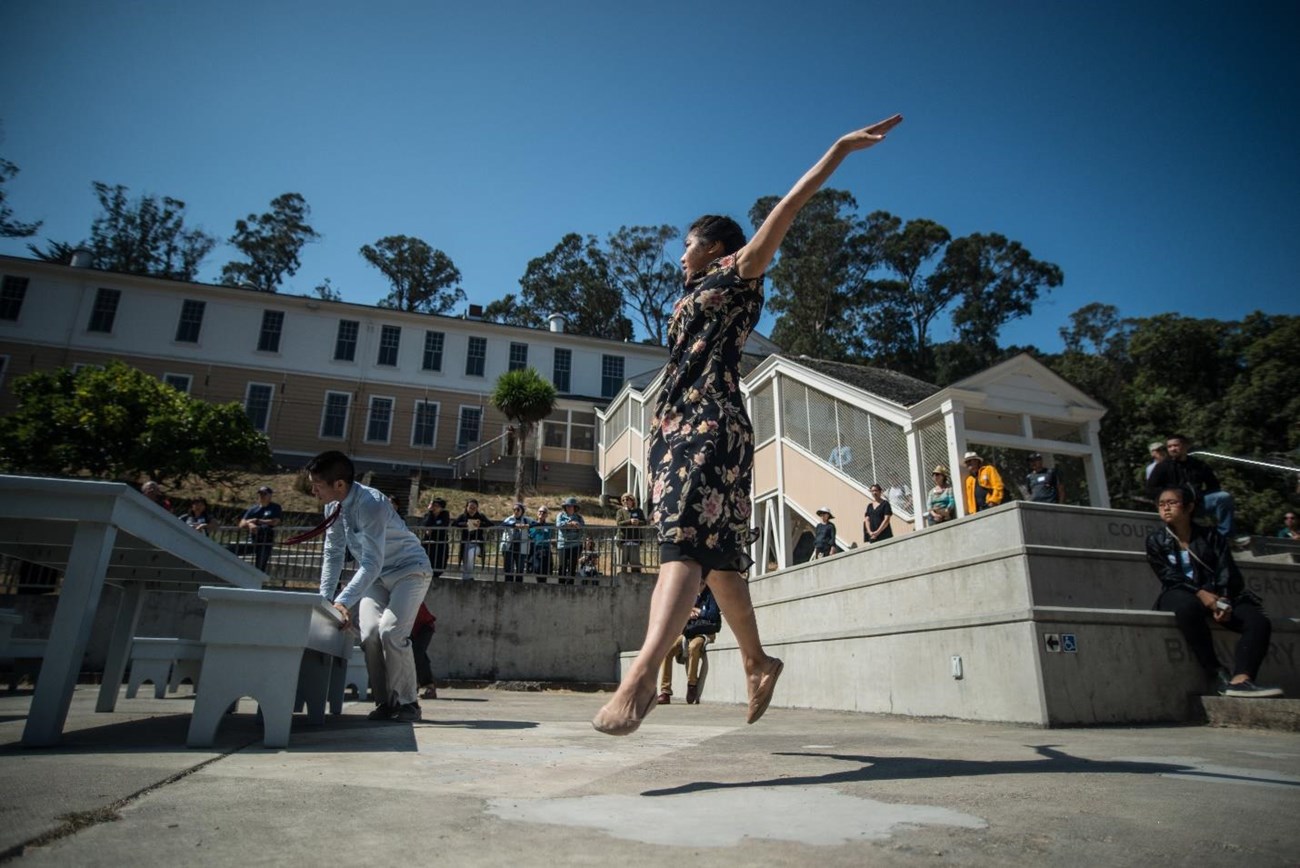Last updated: March 2, 2022
Article
Arts in the Parks: Fostering Understanding, Healing and Reflection

By Elizabeth Brown
Bay Area residents are no strangers to the challenges which accompany the fight for cultural freedom. The region boasts an astoundingly global population that have enriched its history and identity through the decades. Posing as a backdrop to this complex past are the vast landscapes of the western United States parks. A metaphorical blank canvas for inspired thinking, these parks present a unique opportunity for creative interpretation.
Arts in the Parks, a National Park Service program managed by the Golden Gate National Parks Conservancy, has splashed bold strokes of color on that canvas at Golden Gate National Recreation Area. The program taps into the decades-long legacy of artistic inspiration in America’s national parks, connecting visitors to transformative and unconventional experiences. Since 2006, more than 280 artists have participated in 27 Arts in the Parks projects at the park – engaging more than 1,176,000 visitors. These works have created opportunities to reflect, relate and respond to the intricate relationship between our public lands and the history and freedom of the American experience.
@Large: Alcatraz Island as a Community Catalyst
A major catalyst for public art at Golden Gate National Recreation Area, “@Large: Ai Weiwei on Alcatraz,” revived regional community interest in a site that is usually visited by tourists. Ai Weiwei, an internationally celebrated Chinese artist recognized for his multifaceted, sociopolitical and creative productions, developed the installation to examine questions surrounding human rights and free speech. A unique public space for this topical exploration, Alcatraz is filled with stories of incarceration, justice and our common humanity – prompting visitors to contemplate the implications of imprisonment.

Ai Weiwei, who was detained by Chinese authorities in 2011, was inspired by the history of the island. Once a maximum-security federal penitentiary, 19th century military fortress, and Native American heritage and protest site – Alcatraz Island provided Ai Weiwei with the perfect space for exploring restriction, liberty and individual rights.
“@Large” attracted more than 900,000 visitors and increased local visitation to the island by 71 percent, highlighting the power of art to reach new and old audiences. Ai Weiwei’s ability to instill aesthetic grace in a setting saturated with hardened exteriors along with his personal experience with Chinese detainment, inspired artwork by underrepresented voices in the community and beyond. The thematic focus of “@Large,” and the inherent complexities of individual freedom are universally relatable. The ability of art to serve as an instrument for advocacy and collective reflection shed light on the profound community value of Arts in the Parks.
“@Large” emphasized the need to reach new audiences and for more diverse voices to be heard, a sentiment that is echoed by the agency’s endeavors to enhance its relevancy across new audiences in its second century.
Home Land Security: A Global Perspective on Security
“Home Land Security” sustained this momentum at the Golden Gate National Recreation Area, by featuring the works of emerging global artists at the Presidio, the site of a former military fort. From Sept. through Dec. of 2016, the works of 16 artists hailing from nine different countries were showcased, prompting visitors to reflect on their own understanding of national security, the necessity of defense and psychological borders. Developed in partnership with the FOR-SITE Foundation, the National Park Service, the Golden Gate National Parks Conservancy and the Presidio Trust – the exhibition captured a key theme of the agency’s 100th anniversary: building connections between individuals and their landscapes. Visitors were able to achieve this through thought-provoking experiences in an often-overlooked terrain.
The opportunity to energize the visitor experience has strengthened a sustained excitement about cultural expression at park sites, especially for Cheryl Haines, the “Home Land Security” curator and FOR-SITE’s executive director.

“[It] has furthered my interest in working with artists whose ideas create dialogue around social change. By placing art that examines security’s human cost inside former military sites, ‘Home Land Security’ provides a powerful context for looking at how fear of [the] ‘other’ can obscure the commonality of humanity experience and contribute to cultural misunderstanding,” Haines said.
Within These Walls: Healing through Performance Art
By 2017, the creative stage had been poignantly set for “Within These Walls,” a dance project at the Immigration Station on Angel Island State Park. The project was conceived, produced and directed by Lenora Lee, a Bay Area choreographer, artistic director and the founder of Lenora Lee Dance. The performance commemorated the 135th Anniversary of the Chinese Exclusion Act, which prohibited the immigration of Chinese laborers and the 170,000 Chinese immigrants processed at Angel Island between 1910 and 1940.
“I knew creating an immersive performance work inside the Immigration Station would bring the reality of [immigrant] experiences to the forefront, generating an intimate window into the injustices that took place there. The buildings breathe of their stories – carved into the walls are over 200 poems in Chinese that detail their time of incarceration,” Lee said.
Inspired by the experiences of processed and detained immigrants at Angel Island, the performance catalyzed her own healing process, as well as those of her performers, the audience and the community. According to Lee, this type of performance work is crucial for communicative expression.
“Immersive performance has, like no other form, brought me to the most intimate sense of connection with audiences, placing us on equal footing with one another,” Lee said.
Audience members drew immediate connections to their lives today, with one individual calling the performance “moving and beautifully rendered, so timely given the global dialogue around immigration.” Another said, “I couldn’t help but think of my grandmother as I watched the performance.”
The embedded history of this work is personal to Lee – three of her grandparents were processed at the station. “They could never utter their realities, for fear of the loss of family, [and] everything they had and were living or working so tirelessly for,” Lee said.
This is a familiar story as many residents share Lee’s experience, with family members “bleeding effects into their lineage for generations that followed and generations to come,” Lee said.
These performances transformed the Immigration Station into a site of remembrance, engaging the public to understand grief as reflective, beautiful and healing.

The Legacy of Creativity
“@Large,” “Home Land Security” and “Within These Walls” reintroduced community-wide spaces in public parks in the Bay Area, forging connections between individuals and place. The National Park Service’s Arts in the Parks has not only fostered a greater understanding of these historic landscapes, but has also facilitated deeply personal experiences in national park settings – creating spaces for people to share their own stories.
This is a sentiment felt not only by the public, but National Park Service staff too. Charlie Tracy, National Park Service - Rivers, Trails and Conservation Assistance program landscape architect and project specialist, reminds us that while the artwork installation or performance may be temporary, its impression on the individual is lasting.
Although these creative projects may manifest themselves differently across contexts, their principles remain the same. Artistic creation, no matter the setting, provides visitors the opportunity to better understand themselves, the community and the land. Art is an indispensable tool for engagement – a tool for welcoming, belonging and understanding.
